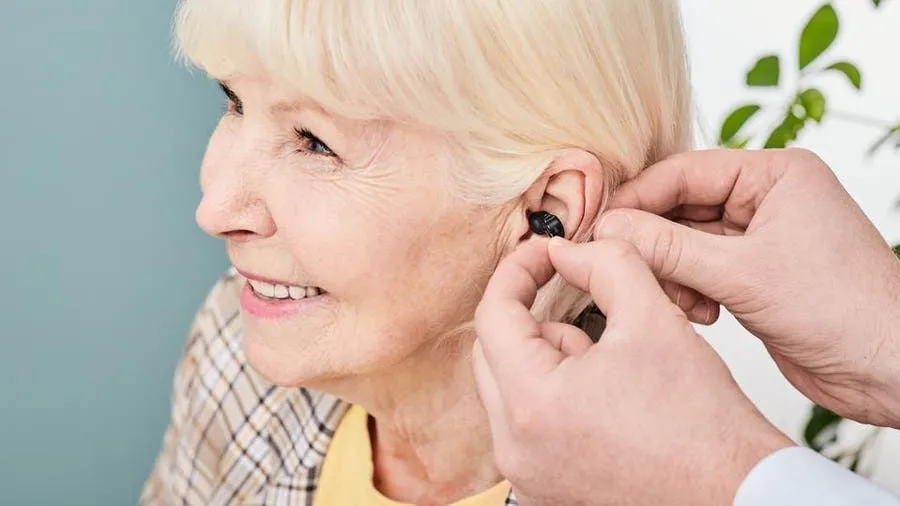A hearing aid is not just a small device worn in the ear — it’s a tool that radically transforms a person’s quality of life. It reconnects people with the world, restores social interactions, and helps them become more active in daily life. However, to fully benefit from a hearing aid, one must go through the adaptation process.
Adaptation involves not only physical but also psychological and social aspects. For first-time users, sounds may seem strange or even irritating. But with patience, persistence, and the right approach, the hearing aid becomes an inseparable part of life.
The First Step
Adaptation begins with a hearing test. Based on audiometry and tympanometry results, specialists determine the device’s required power. The role of an audiologist is crucial: if the wrong device is chosen, the adaptation period becomes more difficult.
Key factors for device selection:
- Degree of hearing loss
- Ear anatomy
- Age of the user
- Lifestyle and daily needs
The First Experience
The first reaction to wearing a hearing aid varies. Some people feel joy, while others feel confused, as the brain is suddenly flooded with sounds it hasn’t processed for years.
For example, the ticking of a clock, the rustling of paper, or footsteps may feel unusual. Initially, sounds seem too loud, but with time the brain normalizes them.
How Long Does Adaptation Take?
The adaptation period differs for everyone. On average, it lasts from 4 weeks to 3 months, though some people adjust within days.
Factors that affect adaptation speed:
- Level of patience
- Brain’s sound memory
- Daily usage time
- Age (children adapt faster, older adults slower)
The Brain’s Relearning Process
Once a hearing aid is used, the brain must “relearn” forgotten sounds. This is much like re-learning a language one once knew.
Background noises that were previously ignored now become audible. At first, this is overwhelming, but gradually the brain learns to filter them. For instance, street noise may initially feel unbearable, but after weeks, the user focuses only on relevant sounds.
The Role of Daily Use
The key to successful adaptation is consistent use. Wearing the device only for meetings or special occasions is a mistake, as it forces the brain to restart the learning process each time.
Specialists recommend:
- Wear the device daily for most of the day
- Remove it only when sleeping or in water
- Aim for 8–10 hours of daily use in the first weeks
Adjusting to Different Environments
A hearing aid works differently in different settings:
- Quiet room: best for understanding how the device functions
- Noisy restaurant: background noise can make speech harder to follow, though modern aids filter it out
- Outdoors: birds chirping, wind blowing, and nature sounds create harmony
Psychological Adaptation
Equally important is psychological adaptation. Hearing loss often causes people to withdraw from social life. With hearing aids, they regain confidence and reconnect socially.
Positive outcomes include:
- Increased self-confidence
- Reduced shyness
- Stronger social bonds
Common Challenges
- Sound sensitivity — sounds may feel too loud
- Discomfort in the ear — itching or pressure from the mold
- Technical issues — fast battery drain, microphone clogging
Solutions
- Specialist support: proper adjustments by an audiologist
- Patience: early discomfort is normal
- Technical care: regular cleaning and maintenance
Adaptation in Children
Children adapt faster since their brains are more flexible. Early use ensures normal speech and communication development.
Parents’ role:
- Motivate the child
- Engage in frequent conversation
- Seek speech therapy support
Adaptation in Older Adults
Older adults may take longer, as they’ve often lived with hearing loss for years and struggle to accept the device.
Tips:
- Explain benefits simply
- Start with short usage times
- Involve family support
The Role of Technology
Modern hearing aids feature Bluetooth, AI-based noise filtering, and clear sound transmission, making adaptation easier.
For example, users can directly connect to smartphones, listen to music, or watch TV through their hearing aids.
Tips for Successful Adaptation
- Begin in quiet environments
- Gradually move to noisier places
- Increase daily usage step by step
- Clean and check the device regularly
- Listen to different sounds — music, nature, conversations
Conclusion
The adaptation process may seem challenging, but the reward is life-changing: restored hearing and a return to active living. Patience, persistence, and proper use ensure success.
FAQ – Frequently Asked Questions
1. How long does adaptation take?
On average, 4–12 weeks, though it varies.
2. Why do sounds seem strange at first?
Because the brain is relearning to process them.
3. Do children adapt faster?
Yes, thanks to their brain’s flexibility.
4. Is it enough to use the device only at home?
No, it must be used in all environments.
5. Do modern technologies help?
Yes, Bluetooth and smart features make adaptation easier.



